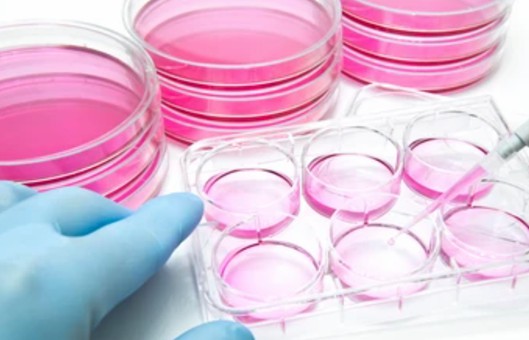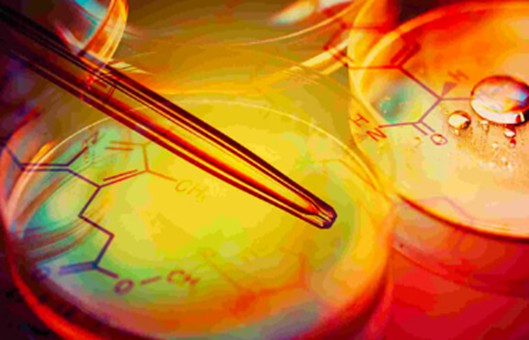Resources
-
Cell Services
- Cell Line Authentication
- Cell Surface Marker Validation Service
-
Cell Line Testing and Assays
- Toxicology Assay
- Drug-Resistant Cell Models
- Cell Viability Assays
- Cell Proliferation Assays
- Cell Migration Assays
- Soft Agar Colony Formation Assay Service
- SRB Assay
- Cell Apoptosis Assays
- Cell Cycle Assays
- Cell Angiogenesis Assays
- DNA/RNA Extraction
- Custom Cell & Tissue Lysate Service
- Cellular Phosphorylation Assays
- Stability Testing
- Sterility Testing
- Endotoxin Detection and Removal
- Phagocytosis Assays
- Cell-Based Screening and Profiling Services
- 3D-Based Services
- Custom Cell Services
- Cell-based LNP Evaluation
-
Stem Cell Research
- iPSC Generation
- iPSC Characterization
-
iPSC Differentiation
- Neural Stem Cells Differentiation Service from iPSC
- Astrocyte Differentiation Service from iPSC
- Retinal Pigment Epithelium (RPE) Differentiation Service from iPSC
- Cardiomyocyte Differentiation Service from iPSC
- T Cell, NK Cell Differentiation Service from iPSC
- Hepatocyte Differentiation Service from iPSC
- Beta Cell Differentiation Service from iPSC
- Brain Organoid Differentiation Service from iPSC
- Cardiac Organoid Differentiation Service from iPSC
- Kidney Organoid Differentiation Service from iPSC
- GABAnergic Neuron Differentiation Service from iPSC
- Undifferentiated iPSC Detection
- iPSC Gene Editing
- iPSC Expanding Service
- MSC Services
- Stem Cell Assay Development and Screening
- Cell Immortalization
-
ISH/FISH Services
- In Situ Hybridization (ISH) & RNAscope Service
- Fluorescent In Situ Hybridization
- FISH Probe Design, Synthesis and Testing Service
-
FISH Applications
- Multicolor FISH (M-FISH) Analysis
- Chromosome Analysis of ES and iPS Cells
- RNA FISH in Plant Service
- Mouse Model and PDX Analysis (FISH)
- Cell Transplantation Analysis (FISH)
- In Situ Detection of CAR-T Cells & Oncolytic Viruses
- CAR-T/CAR-NK Target Assessment Service (ISH)
- ImmunoFISH Analysis (FISH+IHC)
- Splice Variant Analysis (FISH)
- Telomere Length Analysis (Q-FISH)
- Telomere Length Analysis (qPCR assay)
- FISH Analysis of Microorganisms
- Neoplasms FISH Analysis
- CARD-FISH for Environmental Microorganisms (FISH)
- FISH Quality Control Services
- QuantiGene Plex Assay
- Circulating Tumor Cell (CTC) FISH
- mtRNA Analysis (FISH)
- In Situ Detection of Chemokines/Cytokines
- In Situ Detection of Virus
- Transgene Mapping (FISH)
- Transgene Mapping (Locus Amplification & Sequencing)
- Stable Cell Line Genetic Stability Testing
- Genetic Stability Testing (Locus Amplification & Sequencing + ddPCR)
- Clonality Analysis Service (FISH)
- Karyotyping (G-banded) Service
- Animal Chromosome Analysis (G-banded) Service
- I-FISH Service
- AAV Biodistribution Analysis (RNA ISH)
- Molecular Karyotyping (aCGH)
- Droplet Digital PCR (ddPCR) Service
- Digital ISH Image Quantification and Statistical Analysis
- SCE (Sister Chromatid Exchange) Analysis
- Biosample Services
- Histology Services
- Exosome Research Services
- In Vitro DMPK Services
-
In Vivo DMPK Services
- Pharmacokinetic and Toxicokinetic
- PK/PD Biomarker Analysis
- Bioavailability and Bioequivalence
- Bioanalytical Package
- Metabolite Profiling and Identification
- In Vivo Toxicity Study
- Mass Balance, Excretion and Expired Air Collection
- Administration Routes and Biofluid Sampling
- Quantitative Tissue Distribution
- Target Tissue Exposure
- In Vivo Blood-Brain-Barrier Assay
- Drug Toxicity Services
Protocol for Clonal Growth of Cells in Semi-solid Medium
GUIDELINE
The growth of cells in a semisolid medium, whether agar, agarose, or methylcellulose, offers some advantages. The spherical bacteria-like colonies that form from monodispersed cell suspensions offer a means of isolating clones with a minimal amount of effort. Using a finely drawn pipette, single, well-isolated colonies can be removed from the suspended state and subcultured. However, some variations must be used depending on cell types. Clones in which there is loose intercellular bonding can be dissociated into a monodispersed population through gentle pipetting. However, many cell types require further enzymatic treatment to disperse them or must be treated as explants.
METHODS
- Prepare 1× nutrient agar medium: a) Melt 2.5% agar in the autoclave, microwave oven, or boiling water bath, then place in a 45°C water bath. The agar temperature must be allowed to cool to 45°C before proceeding. b) Warm nutrient mix in a 45°C water bath. The temperature of the nutrient mix must be allowed to reach 45°C before proceeding. c) Pour contents of 2.5% agar into the nutrient mix to create the osmotically balanced 1× nutrient agar medium with a 0.5% agar concentration. Mix gently but avoid bubbles. Do not allow the mixture to cool. Keep nutrient agar medium in the 45°C water bath when not being used.
- Pipette 7 mL of the 1× nutrient agar medium per 60 mm dish. Allow agar to cool and harden. Once hardened, return the plates to the incubator. This agar layer will provide a base nutrient layer to support cell growth for at least one week. It will also keep the cells from reaching and attaching to the plastic on the bottom of the dish.
- Distribute 1 mL aliquots of 1× nutrient agar medium in eight 15 mL centrifuge tubes. Keep tubes at 45°C in the water bath and do not allow the mixture to cool or it will begin to harden and develop clumps.
- Prepare the cell suspension in a complete growth medium. When first plating a new cell type, we recommend that tubes be set up with the following cell concentrations: 1×105, 1×104, 1×103, and 1×102 cells/mL. Use 0.5 mL cell suspension added to 4.5 mL complete growth medium (no agar) to make these 1:10 dilutions. a) Add 0.5 mL of each dilution to individual tubes of the nutrient agar mixture. Mix gently (but avoid bubbles) and immediately pour the contents of the tube (0.33% agar) on top of the bottom agar layer in one of the dishes. Work rapidly. If the nutrient agar is lower than 45°C before mixing, then the cell suspension may form clumps when plated. If the medium is too warm, the cells will be heat-shocked and may not survive. b) Repeat the process for the seven remaining tubes and plates, setting up each cell concentration in duplicate.
- Allow agar in plates to harden for 15 to 30 minutes on the bench top and then place them in a CO2 incubator. If the resulting medium is too soft, try increasing the initial agar concentration to 3.5%. This will give a final agar concentration in the base layer of 0.7%.
- Examine plates every two or three days until colonies are large enough to see with the unaided eye.
Creative Bioarray Relevant Recommendations
- Creative Bioarray provides the world's most comprehensive list of cells and has realized that animal and human primary cells, tumor cell lines, continuous (immortalized) cell lines, and tissues are critical to the biopharmaceutical industry and biomedical research as reagents, therapeutic modalities, and as proxy materials. Additionally, we also offer a series of classic media, PremSera® serum, and stem cell media for a range of cell culture applications.
NOTES
- The key to success for this procedure is to keep the agar medium at 45°C until the cells are added and then to plate them immediately before the agar medium clumps or solidifies, or the cells are heat-shocked and damaged.
- These concentrations will result in plates with 5x104, 5x103, 5x102, and 5x101 cells/dish. If different cell concentrations are required, then adjust dilutions accordingly.
RELATED PRODUCTS & SERVICES
For research use only. Not for any other purpose.



